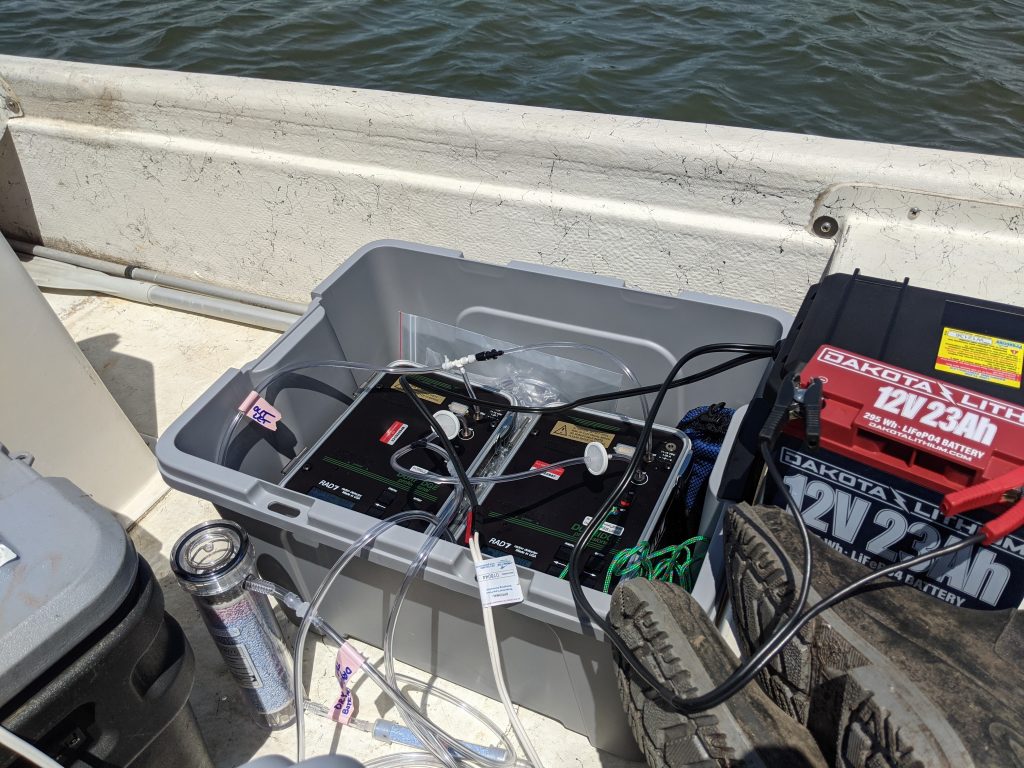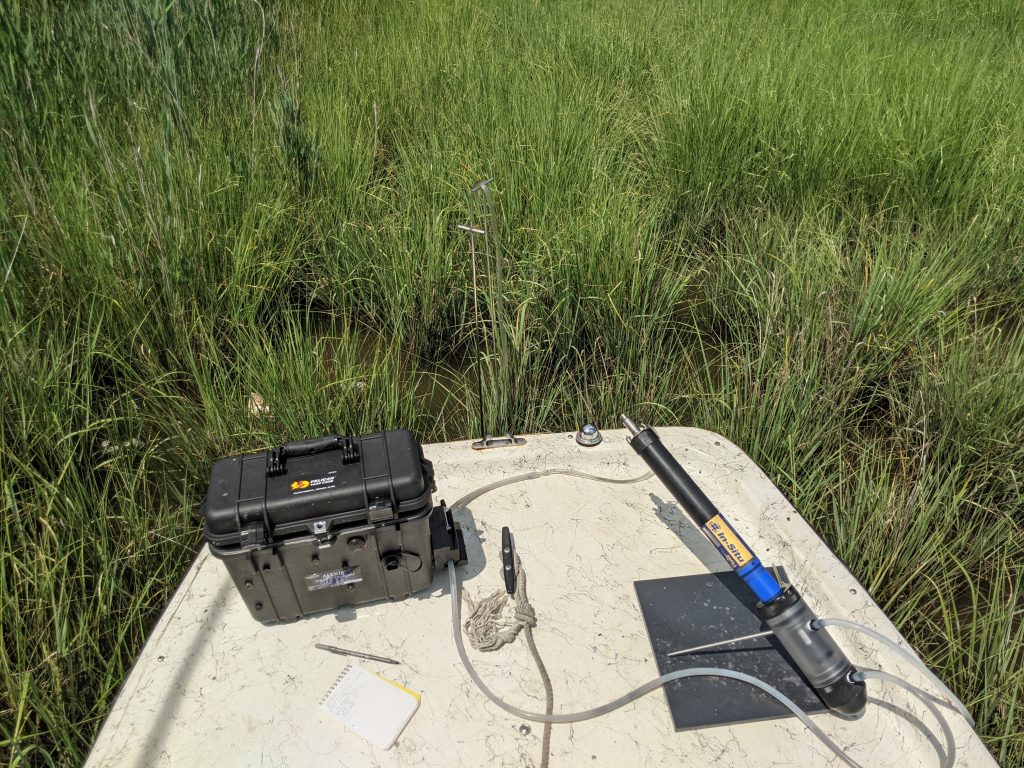Submarine Groundwater Discharge
STING – Submarine Groundwater Discharge, Trichodesmium, Iron & Nitrogen in the Gulf of Mexico
Coastal boundary inputs of dissolved organic nitrogen (DON) and dissolved iron (dFe) are poorly constrained, yet important, sources of nutrients to oligotrophic coastal ecosystems. This project seeks to quantify the flux and isotopic signatures of submarine groundwater discharge (SGD) derived DON and dFe to the West Florida Shelf, and evaluate the bioavailability of this temporally-variable source. The work will evaluate whether SGD stimulates N fixation on the WFS, and the potential for the stimulated N fixation to further modify the chemistry of DON and dFe in the region. We are working in collaboration with Angie Knapp (Texas A&M, lead PI), Rene Boiteau (U. Minnesota), Kristen Buck (OSM), Dreux Chappell and Tim Conway (USF), and Chris Smith (USGS), funded by NSF Chemical Oceanography (award OCE-2148812). This project is GEOTRACES Process Study #GApr18






SGD & Eelgrass Restoration
With funding from Restore America’s Estuaries, we have worked in Peconic Bay, NY to identify shorelines where SGD may provide cool water temperature refugia during the summer and to conduct eelgrass restoration in these areas. Our team has mapped shorelines impacted by SGD from airborne thermal infrared overflights, with follow-up ground truthing validation, including in-situ radon and thermal surveys. This project is a demonstration of a potential regional habitat restoration strategy in the face of continued warming, in collaboration with Brad Peterson (SBU) and Joyce Novack (Peconic Estuary Partnership).






Chesapeake Bay
We are actively working on local SGD projects in the Chesapeake Bay region, from surveys in the Lafayette and York Rivers, the Eastern Shore, to sediment coring and groundwater well monitoring in the ghost forests of First Landing State Park.






